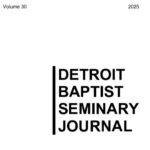How to Read a Psalm
 When I have preached on a psalm in a church, some people have mentioned to me that they were familiar with a verse from the psalm but they had not thought about the passage’s overall message. I have often wondered if believers have a good reading strategy for getting the most out of a psalm. With this post, I will point out a reading strategy that focuses on the three-part structure of a psalm (this post is adapted from Ryken’s Words of Delight, 197–201).
When I have preached on a psalm in a church, some people have mentioned to me that they were familiar with a verse from the psalm but they had not thought about the passage’s overall message. I have often wondered if believers have a good reading strategy for getting the most out of a psalm. With this post, I will point out a reading strategy that focuses on the three-part structure of a psalm (this post is adapted from Ryken’s Words of Delight, 197–201).
First, the subject is generally contained in the first few verses of a psalm. A psalmist may be responding to a thought, emotion, or a situation. The theme may be stated in different ways. In Psalm 1 the theme is found in the first two verses. The psalmist presents his thoughts from the Law about the blessedness of a godly man. In Psalm 23:1 David’s theme is his theological thoughts about God’s rich provisions for him. In Psalm 11:1–2 David’s theme involves a situation where his trust in the LORD helped him through an apparent assassination attempt. In Psalm 124:1–2 the psalmist presents a situation reflecting God’s deliverance of Israel from an enemy. The controlling themes in lyric poems are found in the early verses.
Second, the development of the subject is the major part of the poem’s structure. The various authors of the psalms generally develop their subject in four ways. The first way is by using contrast. In Psalm 1 the psalmist sets up a contrast between the righteous and the wicked. This contrast emphasizes the blessedness of the godly. David’s trust in the LORD to handle his trial in Psalm 11 is contrasted with the advice to flee from Jerusalem. The second method of developing the subject is through listing items that are associated with the subject. Praise hymns generally catalog God’s characteristics and actions. Another example of this is found in a psalm of confidence, Psalm 23. In this familiar example, David’s subject of God’s rich provisions for him (v. 1) is itemized by a number of God’s provisions such as rest, restoration, moral direction, and protection (vv. 2–6). The third manner is by the use of relationship. The subject in Psalm 19 is the majesty of God (v. 1). David initially shows how nature reflects God’s majesty and then moves to a related item, God’s majesty as reflected in His Word (vv. 7–14). The fourth way is through repetition. The theme in Psalm 133 is the blessedness of Israelites who are united in worship. The psalmist uses various images to develop his theme.
Third, a psalm is rounded off by its conclusion. This may be in the form of a summation as in Psalm 1:6, “For the LORD watches over the way of the righteous, but the way of the wicked leads to destruction.” It may also be in the form of prayer as in Psalm 19:14 or an exhortation as in Psalm 32:11.
Reading a psalm in light of its threefold structure gives us a strategy to better understand a psalm’s overall message. And, as we comprehend each psalm’s overall message, may God grant that they guide us in our worship of him.


